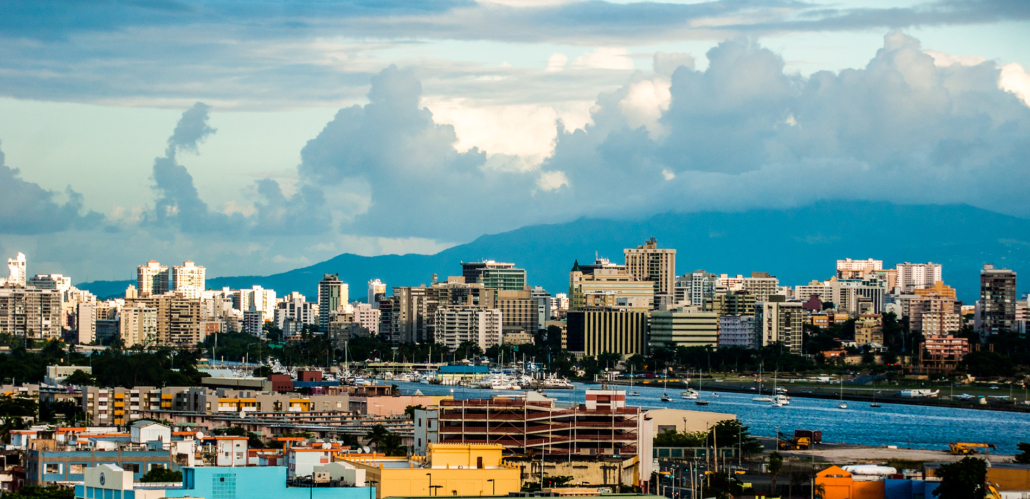3 Factors Perpetuating Poverty in Puerto Rico

Puerto Rico is a Caribbean island and United States territory which has struggled with poverty long before the COVID-19 pandemic. In 2019, of Puerto Rico’s 3.2 million people, 43.1% of the total population and 57% of children lived in poverty. For comparison, the U.S. national poverty rate was drastically lower at 13.1%. Poverty in Puerto Rico has become a chronic issue as a long-term recession resulted in massive debt. The island has also endured multiple disasters, the most recent being Hurricane Maria and COVID-19. These hardships have weakened Puerto Rico’s economy, infrastructure and health systems and have left vulnerable groups even more susceptible to poverty. However, Puerto Ricans have demonstrated remarkable resilience and current efforts are helping to improve this situation. Here are three factors perpetuating poverty and COVID-19 in Puerto Rico, and what some are doing to change these circumstances for the better.
Recession
While external factors have exacerbated poverty in Puerto Rico, the current crisis has been building in conjunction with a decade-long recession. Economic growth fell by 10% between 2004 and 2018, with an unemployment rate above 8% and a declining population compounding this deficiency. Some elements such as the encouragement of Puerto Rico’s reliance on U.S. loans to fill federal funding gaps, a 1996 change that mandated Puerto Rican businesses begin paying taxes—in contrast to their previous tax-free status under the Internal Revenue Code Section 936—and the 2008 financial crisis, which further lowered tax revenues and caused large-scale unemployment, have mainly fueled this debt crisis. These issues have culminated to create massive debt and a chronic recession that has exacerbated poverty within the territory.
The most notable improvement effort occurred with the creation of the 2016 Puerto Rico Oversight, Management and Economic Sustainability Act (PROMESA), which oversees Puerto Rico’s finances and works to restructure its debt. In 2019, PROMESA announced a plan to reduce the island’s debt by one-third to enable it to function under less financial stress and better support people in need.
Hurricane Maria
In addition to this long-term recession, the country’s vulnerability to severe hurricanes has perpetuated poverty in Puerto Rico. The most recent hurricane was also the most destructive in nearly a century. Hurricane Maria struck Puerto Rico on September 20, 2017, and its destruction created lasting consequences. In addition to destroying thousands of homes and causing $94.4 billion in infrastructural damage, Maria wiped out about 80% of the island’s agriculture. Immediately following the hurricane, 100% of the island lost power for months and lacked access to necessary items including water, food, medicine and fuel. Though the U.S. government has promised increased funding to help fix the island’s damaged infrastructure, repairs have been slow and people are advocating for increased disaster relief funding.
Puerto Rico has repaired much of its infrastructure and widely improved living conditions. Meanwhile, the return of tourism has helped boost the economy in the three years following Hurricane Maria. Efforts by nonprofits and citizen groups have also helped bring attention to the issues that remain and attract funding to transform temporary band-aids into long-term solutions.
COVID-19
Three years after Hurricane Maria, Puerto Rico is now facing a daunting new crisis: COVID-19. The declining population, a long-term recession and extensive hurricane damage have left Puerto Rico with a largely poor and elder population, both factors that increase vulnerability to the disease. Following Hurricane Maria, the portion of the population over age 65 increased from 14% in 2008 to 21% in 2018 as many working-age adults sought better employment opportunities in the U.S. mainland.
The high poverty level is affecting the quality of life during quarantine, as Puerto Rico has not rebuilt many homes following Hurricane Maria. Meanwhile, those who previously struggled financially are now jobless.
Due to its status as a territory, the U.S. federal government does not prioritize Puerto Rico in terms of crisis management. Although Puerto Rico receives federal funding to support critical programs such as Medicaid, this funding is insufficient under regular circumstances and does not adapt to meet Puerto Rico’s unique needs. Puerto Rico has received some extra provisions under the Coronavirus Aid, Relief, and Economic Security (CARES) Act, however, including stimulus checks, expanded unemployment benefits and temporarily increased Medicaid funding. However, these funds comprise only a fraction of what states receive. Advocates for Puerto Rico urge policymakers to consider the fact that Puerto Rico entered the pandemic in a more vulnerable position than the U.S. when determining whether to extend funding.
Potential for a Better Future
Puerto Rico’s experience with frequent disasters has taught citizens to be self-sufficient and prepare for when disaster strikes. This silver lining helped the island quickly transition into lockdown in early March 2020, and citizens and organizations quickly acted in times of need to disburse basic necessities and medical supplies around the island to the sick and elderly.
The disasters that Puerto Rico continues to experience ravages the small island and further plunges residents into poverty. However, some are executing significant efforts to improve the territory’s infrastructure, health care systems and general living conditions. To effectively combat the factors perpetuating poverty and COVID-19 in Puerto Rico, plans to reduce debt and boost the economy are on the horizon.
– Angelica Smyrnios
Photo: Flickr
